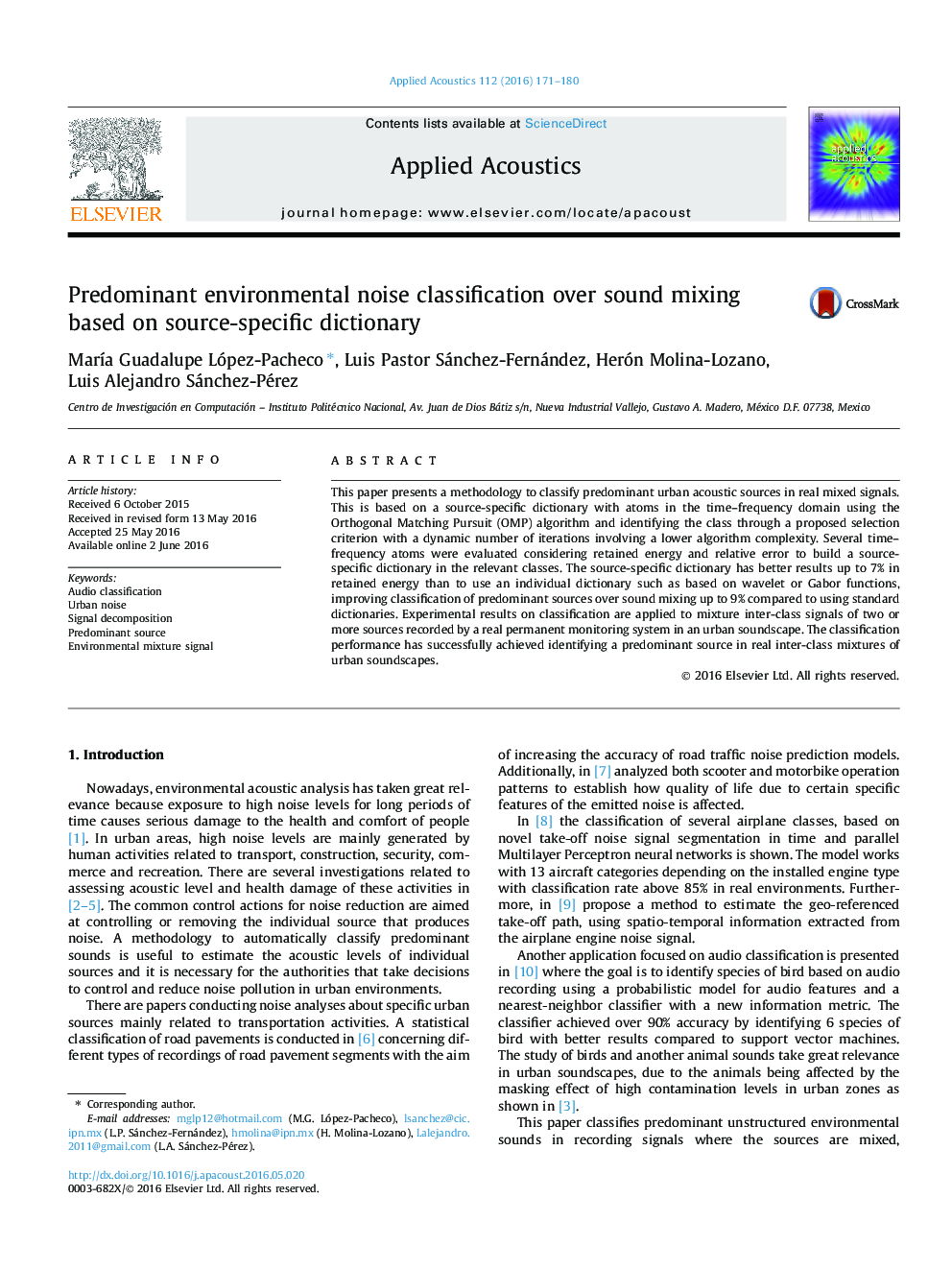| Article ID | Journal | Published Year | Pages | File Type |
|---|---|---|---|---|
| 760744 | Applied Acoustics | 2016 | 10 Pages |
This paper presents a methodology to classify predominant urban acoustic sources in real mixed signals. This is based on a source-specific dictionary with atoms in the time–frequency domain using the Orthogonal Matching Pursuit (OMP) algorithm and identifying the class through a proposed selection criterion with a dynamic number of iterations involving a lower algorithm complexity. Several time–frequency atoms were evaluated considering retained energy and relative error to build a source-specific dictionary in the relevant classes. The source-specific dictionary has better results up to 7% in retained energy than to use an individual dictionary such as based on wavelet or Gabor functions, improving classification of predominant sources over sound mixing up to 9% compared to using standard dictionaries. Experimental results on classification are applied to mixture inter-class signals of two or more sources recorded by a real permanent monitoring system in an urban soundscape. The classification performance has successfully achieved identifying a predominant source in real inter-class mixtures of urban soundscapes.
